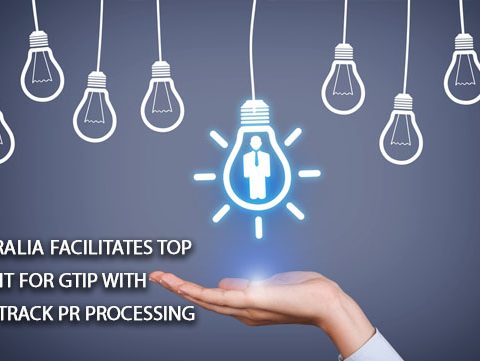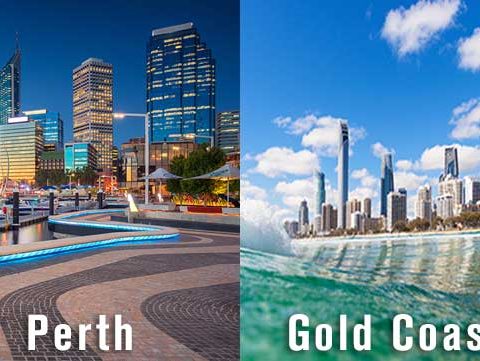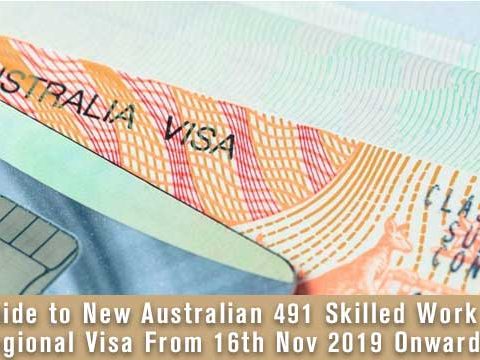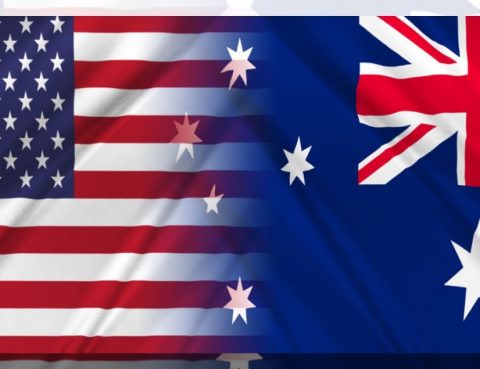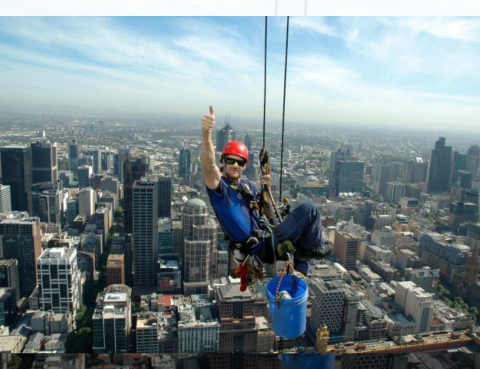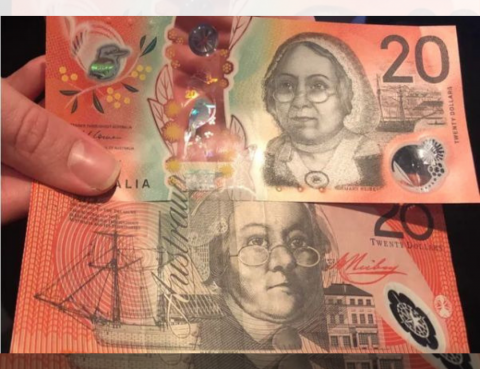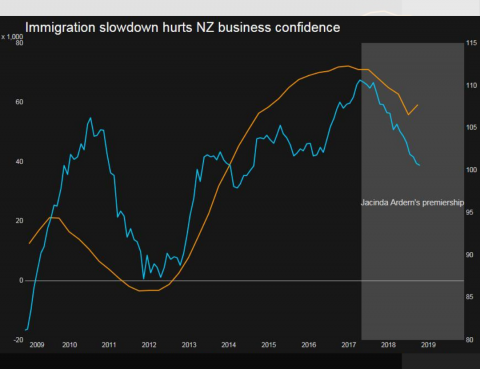
The Australian economy is one of the most stable in the entire world. In fact, unlike most of the developed countries, the continent’s unemployment rate has remained in a single digit with accumulated macroeconomic growth rate remaining stable around 2%. These are some mega milestones achieved by the robust and inclusive model of the Australian economy.
The biggest factor in a stable and growth oriented Australian economy has been the consistent shift of human capital to the country. Not only this, the Australian economy thrives on the induction of skilled migrants in the country and placing them at the right spots. The demand and supply of the human capital plays a very crucial role in this regard and that’s the reason that Australia’s general skilled migration system offers limited places.
The continuous Australian infrastructure development as well as the community uplift needs consistent input from the talent of the outside world. Recently, Australia added more professions into its ever-expanding list or the SOL with a new visa regime that is going to make it easier for aspiring migrants to gain PR in order to live and work in the country. The visa changes starting 16th November 2019 have been discussed in detail and you can click this link to read all about it.
Australia needs workforce and it needs it in a systematic pattern where the demand and supply equilibrium are perfectly maintained. From plumbers to electricians and from cops to nuclear reactor engineers; there is a job for virtually everyone who has a skill that can help Australia grow. However, the law of demand and supply is a natural phenomenon and there’s a lot of competition for the jobs since the global skilled population exceeds the number of jobs available.
There is a requirement for skilled human resources in every part of Australia. However, since the number of skills is in thousands; we have shortlisted the 5 most in-demand jobs in Australia. These jobs are nearly always available for trained manpower and it is easier for the aspiring migrants having experience in these trades to find jobs once they land in Australia.
- Engineering
Australia is in a “desperate” need for Engineers. The number of Engineering graduates being produced in Australia by the polytechnics and universities is far less than the demand of the industry. It is a well-known fact that Australia imports twice the engineering related human capital than it produces at home. This has been on-going for a decade now. Also, since Southern Australia is witnessing a massive infrastructure development, engineering staff is in demand in all cadres of development.
Currently, the following engineering fields require trained and qualified personnel in order to fill in the human capital gap within these industries:
- Chemical, Biochemical and Petro Chemical Industry
- Metallurgical Engineering
- Civil, Road and Transportation
- Quantity and Quality Surveying
- Geophysical and Geo Technical Engineering
- Construction and Structural Engineering
- Electrical Engineering
- Electronics Engineering
- Industrial and Solar Engineering
- Mechanical, Mechatronics and Avionics Engineering
- Production Control Management Systems
- Agricultural Engineering
- Environmental Engineering
- Telecommunications
Please note that these are only some of the well-known engineering related fields that require immediate manpower to take up urgent positions. There are hundreds of engineering disciplines whose professionals are direly needed in the whole of Australia. According to Seek.com.au, a simple search draws up 17000+ engineering jobs available all through Australia. Same is the case if you use any other job portal. Mostly, trained and experienced engineering staff is hired directly by the Employer.
- Healthcare
After Engineering, the healthcare sector is the most active employer in Australia. Australian Government wants to provide top of the line healthcare and aged assistance services. For this reason, healthcare professionals are always in demand within the continent. Also, Australia is quickly becoming the medical tourism hub for Asia Pacific and has witnessed a rapid growth in medical tourism industry. The chances of good and experienced medical staff to acquire the Australian PR are bright. However, like every industry, the Enterprises in the country are looking for the best.
The following experienced healthcare professionals have a good chance of acquiring the Australian PR:
- Medical Doctors
- Medical Specialists
- Registered Nurses
- Special Need Children Carers
- Nursing Associates and Support
- Physiotherapists
- Aged Carers
- Medical lab technicians and Phlebotomists
- Caretakers for the people with special needs and disabilities
These are only some of the most popular medical fields that require trained manpower in Australia. There are many more healthcare fields that require trained professionals because Australian nursing homes and healthcare facilities are always striving to provide turnkey medical services to their patients.
A summary view at Seek.com.au shows that there are 14000+ active jobs for healthcare professionals throughout Australia.
- Information Technology (IT)
Information Technology simply referred to as IT jobs are aplenty in Australia. The decade has seen very swift mass adaptation of digital technology from organizations of all sizes and niches. From government to grocery stores, technology has played a pivotal role in transforming the way things work. With consistent and rigorous integration of information technology in everyday life, it has become easier and quicker to get things done on time and every single time.
IT professionals are high in-demand in Australia. The industry faces a dilemma like that of the engineering filed. The in-house universities, colleges and technical institutes can not produce enough trained human resources to cater to the expanding need of the IT industry. Therefore, Australia imports the IT manpower and the induction numbers are approximately equal to healthcare and engineering.
Following are some of the IT related jobs that are high in demand in Australia
- Computer Programmers
- Web Developers
- Graphic Designers
- Digital Content Creators
- Mobile Application Developers
- Database Administrators
- Business Intelligence Professionals
- Blockchain apps and protocol developers
- Network Administrators
The most visited Australian job portals indicate a high demand for the above-mentioned IT pros. However, there are scores of other IT jobs that are available in Australia and migration aspirants can apply for them if they fit the job descriptions.
- Education & Training
Australia is a migration hotspot. There are people from the developed and underdeveloped countries who want to call Australia home. This major influx of migrants has created a massive demand for education manpower. Australia has the reputation of not compromising on any aspect of education and healthcare. This is one of the key reasons that people want to migrate to Australia to either get top of the line education for themselves or for their children and family. The education and training sector in Australia is divided into three main blocks.
- Government
- Private
- Private – Public Partnership
All three blocks are continuously evolving to provide the best education and training to their students. From schools to universities, the system of education is comprehensively designed to nourish the students into leaders rather than syllabus crammers. Like all industries in Australia, education and training industry is also looking for experienced professionals. However, the competition is tough because the Australian education system isn’t known for compromising on quality.
Here is a list of some of the trained professionals that are needed in Australia:
- Elementary, Middle and High School Faculty
- School Adminstrators
- Hostel Wardens
- Professors
- Subject Specialist Lecturers
- Librarians
- PE Instructors
- Vocational Skill Trainers
These are only some of the most popular education related professions that command a good demand in Australia. There are many more educational fields that require trained professionals because Australian schools, colleges, universities and polytechnical institutes etc are always striving to provide the best training to their students without compromising on the quality.
- Accounting and Bookkeeping
Qualified professional accountants, bookkeepers and ledger clerks have a consistently growing demand throughout Australia. The Australian economy hasn’t faced an economic turmoil in the recent years, and this has resulted in booming and stable businesses throughout the continent. Accounting personnel are as necessary for a business as are the sales staff. Therefore, there is always a demand for qualified accounting professionals who can manage and consolidate the assets, liabilities and cash flows of enterprises.
Some of the popular accounting related jobs that are available in Australia are:
- Auditors
- Financial Analysts
- Accountants
- Chartered Accountants
- Bookkeeping Clerks
- Ledger Recording Clerks
- Warehouse accounting professionals
- Financial Consolidators
Accounting related jobs are aplenty in Australia. Like other jobs, the Australian organizations – regardless of the size – go for the best. However, anyone with relevant experience and qualification can find it relatively easy to land a job once they arrive on a PR.
This brings us to the end of the part 1 of this series. In upcoming parts of this series, we will be discussing other professions that are in demand. Also, a dedicated piece will be done on the salary brackets that these professions command in Australia. Migrating to Australia is easier than most of us think! It’s a transparent point and skills assessment-based system that gives level playing field to qualified candidates.
BMS Australia has 30+ years of cumulative experience in providing Australian immigration consultancy. We take pride in being a member of MARA along with having some of the best qualified immigration lawyers and registered consultants on board. In case you are looking to increase your chances of success, just click here and leave us a message.

The Global Talent Independent Program (GTIP), that became a news flash in June this year, is now commissioned as a permanent skilled migration visa regime. This permanent migration program has been established for highly skilled human capital in certain fields including the likes of quantum computing, digital security and fintech etc. This step has been taken to keep Australia at par with innovations happening in other developed global regions.
Under the GTIP visa regime, fast-track permanent residencies will be granted to 5000 highly skilled and high-income earners at the top of their respective fields. This policy will continue until June 2020. This program is different and shouldn’t be confused with the GTES (Global Talent – Employer Sponsored Program). The GTES is another skilled talent visa stream that was made permanent in August 2019 after a successful pilot for a year.
The seven shortlisted niches under the GTIP are:
- AgTech
- Space and Advanced Manufacturing
- FinTech
- Energy and Mining Technology
- MedTech
- Cyber Security
In this regard, the Australian Minister for Immigration, Citizenship and Multicultural Affairs Mr. David Coleman said – and we quote – “We want to position Australia at the forefront of major growth trends in the world economy. By enabling local businesses to access the world’s best talent, we will help to grow high growth industries in Australia”.
He further added “While the program is focused on bringing in external talent, Home Affairs expects the scheme will also, by extension, create “opportunities for Australians by transferring skills, promoting innovation and creating job opportunities”.
As per the news sources and the Australian official Home Affairs website, the induction for this express PR will be done via headhunting and via referrals from an organisation or an individual with a national reputation in the same field as the candidate. Also, the eligible candidates should likely be earning more than or equal to AUD 149,000 per annum at the time of visa grant.
This is a developing story and more details on the number of visas given already are expected to surface soon. Please expect omissions, subtractions and additions to this news as we further information is made available by the reliable sources.

Australia is seeking and hunting global talent via its comprehensive skilled migrant program. This is primarily because the Australian economy is booming, and the continent hasn’t faced any downhill macro-economic indicators in the past years.
The Australian government draws, drafts and enhances the General Skilled Migration visa system as per needs of the industries and the demand / supply of trained human capital availability. However, apart from these general criterions, the other norms of the Australian immigration are governed by normal Australian immigration laws and statutes. The Australian skilled migration policy is based on a transparent point system. The Australian general skilled migration program overrode all worker immigration visa regimes during 2012 – 2013.
The current Australia skilled immigration system has 3 distinctive visa subclasses. Each subclass has its own eligibility criteria.
The visa classes and their features are as under:
The visa classes content has been sourced directly from the specialized immigration website of the Australian Government’s Home Affairs Department https://immi.homeaffairs.gov.au. Please expect omissions, addition and subtraction as the content’s authority is with the above mentioned and linked department.
Skilled Independent visa (subclass 189)
Points tested stream
- This visa lets invited workers with skills we need live and work permanently anywhere in Australia.
Eligibility
- You don’t need a sponsor or nominator
- You must be invited to apply
- You must be under 45 to be invited
Stay
- Permanently
Cost
- From AUD 4,045
Source: https://immi.homeaffairs.gov.au/visas/getting-a-visa/visa-listing/skilled-independent-189
Skilled Nominated visa (Subclass 190)
This visa lets nominated skilled workers live and work in Australia as permanent residents.
Eligibility:
You must:
- Have an occupation on the relevant skilled list
- Have a suitable skills assessment for the occupation
- Be invited to apply for this visa
- Satisfy the points test
Stay
Permanently
Cost
From AUD 4,045
Source: https://immi.homeaffairs.gov.au/visas/getting-a-visa/visa-listing/skilled-nominated-190#Overview
Skilled Employer Sponsored Regional (Provisional) visa (subclass 494)
Employer Sponsored stream
This visa enables regional employers to address identified labour shortages within their region by sponsoring skilled workers where employers can’t source an appropriately skilled Australian worker
Eligibility:
You must
- Be nominated to work in an occupation on the relevant skilled occupation list
- Have at least 3 years relevant work experience in your nominated occupation
- Have a relevant skills assessment, unless an exemption applies
- Work only for your sponsor or associated entity, unless an exemption applies
- Be under 45 years of age, unless an exemption applies
- Meet minimum standards of English language proficiency
Stay
5 Years
Cost:
From AUD 4,045
Skilled Work Regional (Provisional) visa (Subclass 491)
This is a provisional visa. It is for skilled workers who want to live and work in regional Australia.
Eligibility:
You must
- Be nominated to apply by a state or territory government agency, or an eligible relative must sponsor you
- Have an occupation on a relevant skilled occupation list
- Have a suitable skills assessment for the occupation
- Be invited to apply
- Satisfy the points test
Stay
5 Years
Cost
From AUD 4,045
From 15 November 2019 the invited pathway visa will be closed to new applications. For more information see: Recent changes (Recent Changes hyperlink to https://immi.homeaffairs.gov.au/what-we-do/skilled-migration-program/recent-changes)
Your Expression of Interest or EoI for any subclass of the General Skilled Migration to Australia via Skillselect is only acceptable on achieving 65 points. In some cases, the applicant underscoring on the points table might lodge an EOI, however, this still won’t make her eligible for the invitation to apply for the visa under this visa regime.
In order to get an Australian general skilled migration visa grant, the applicants’ skills should be a part of the official “Skilled Occupation List” or the SOL. This list is compiled by the Australian Government in collaboration with the labour market stake holders and is enhanced based on the demands of the industry and new skills requirements. The extensive SOL can be found here.
You can read our complete guide on the 491 visas, its benefits, features and eligibility criterion by checking out our complete 491 Visa guide posted here.
The points system for the Australian General Skilled Migration depends on multiple factors. These factors are listed below:
- Age
- English Language Ability
- Overseas Employment
- Australian Employment
- Education Qualifications
- Australian Study
- Nomination/Sponsorship
There are some other factors as well and carry their own points as well. Following is the list of the other factors that contribute points to an application.
- Credentialed community language (NAATI)
- Study and live in Regional Australia or in a low population growth metropolitan area for at least 2 academic years
- Partner Skills (basic requirements and skill assessment)
- Professional Year completed in Australia – for a period totalling at least 1 year in the 4 years before the day invited to apply
Here is the detailed points table. You can take a printout of the table and do a self-assessment to see if you are eligible for skilled migration to Australia.
The Points-table below is just for reference purpose and the Australian authorities may alter them frequently. This points table has been updated to the latest version as released from the relevant immigration authorities.
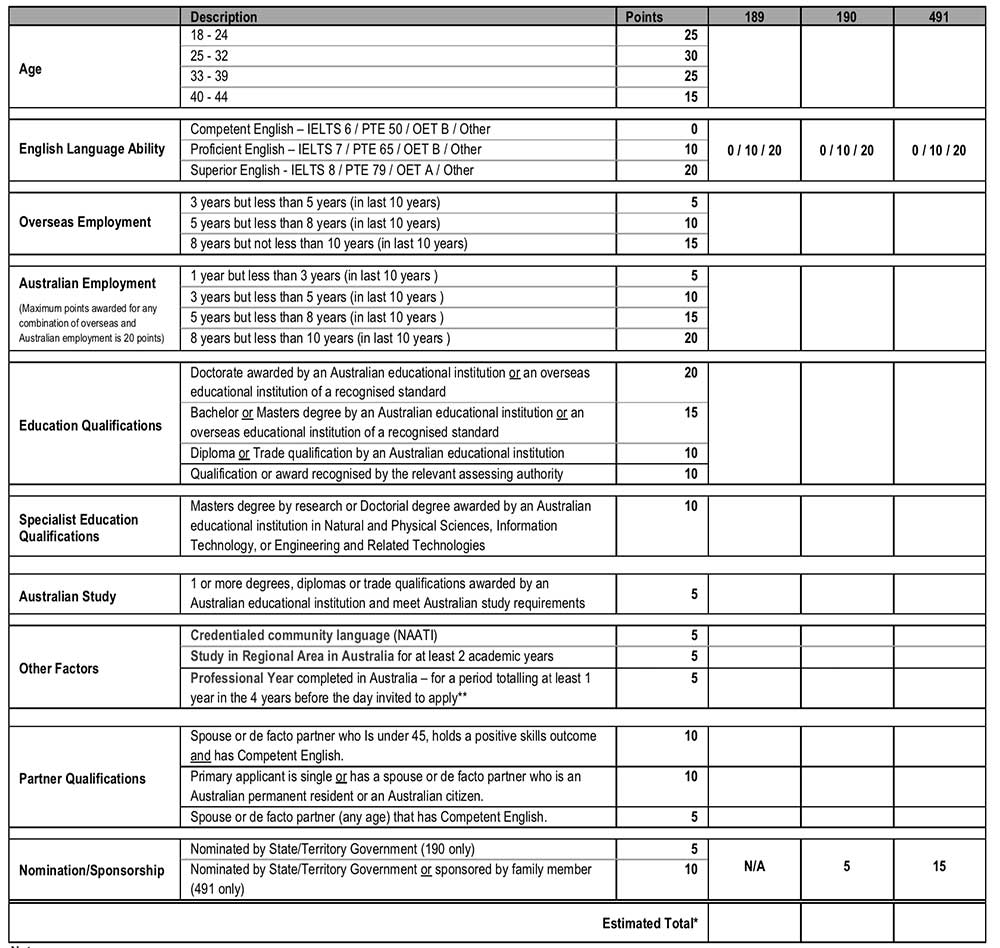
The Australian general skilled visa points system is easy to understand. However, in order to make your EoI stand-out and have a real chance of procuring an invitation, it is advised to consult with a qualified and registered Australian immigration lawyer or consultant. They will be able to lodge your application more effectively because of their extensive knowledge and experience on the subject. BMS Australia takes pride in having a team of the best Australian immigration attorneys with a very high success ratio. Click here to inquire now about the immigration consultation services being offered by BMS Australian.
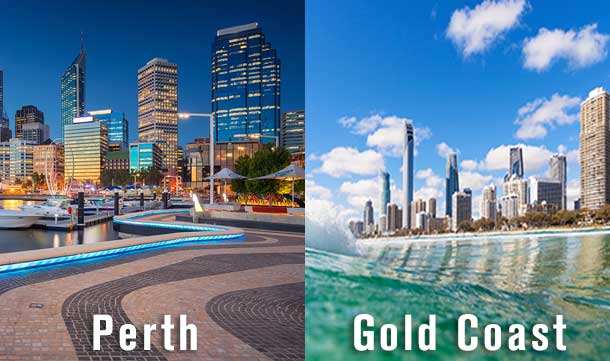
There are some interesting developments happening regarding the new skilled worker visa regime that is all set to be implemented on 16th November 2019. The immigration minister, David Coleman, just made an announcement reclassifying Coast and Perth into regional areas.
The news has come across as a surprise to many since the information regarding the subclass 491 visa had no such addendum regarding the statuses of these cities. According to the senior immigration analysts and lawyers, this move is being made to create a better attraction persona of regional Australia for prospective students and skilled workers to opt for it.
Perth and Gold Coast, like other developed cities such as Melbourne and Sydney, offer the same premium lifestyle and elevated civic amenities. The inclusion of Perth and the Gold Coast in regional Australia will pave way for aspiring immigrants, who want to migrate to Northern Australian territories, now give due thoughts to the southern region. The Australian general skilled migration program is gaining massive popularity due to its transparent points-based system.
The background of this news relates to the replacement of the General Skilled Migration Subclass 489 Visa with the new 491. Apart from an expanded regional area, there are many other key features of this visa class and you can click here to read the complete guide on this new visa.
Please note that this a developing story and can experience omissions, additions and subtractions based on actual implementation of the new policy starting 16th November 2019. Keep watching this space as we will update it with more verified information as it comes in.
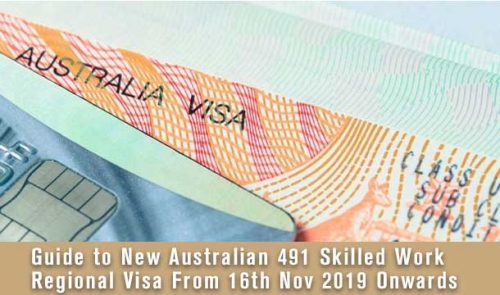 The Australian regional work visas regime is all set to change from 16th November 2019. The newly introduced work visa subclass 491 will be replacing the subclasses 489 and 187. The new clauses indicate that there will be an annual induction of 14000 foreign skilled human capital into the Australian regional areas. Although the new subclasses are termed temporary/provisional visas, but the route to Australian Permanent Residency will remain open with certain conditions and eligibility criteria.
The Australian regional work visas regime is all set to change from 16th November 2019. The newly introduced work visa subclass 491 will be replacing the subclasses 489 and 187. The new clauses indicate that there will be an annual induction of 14000 foreign skilled human capital into the Australian regional areas. Although the new subclasses are termed temporary/provisional visas, but the route to Australian Permanent Residency will remain open with certain conditions and eligibility criteria.
What is the Subclass 491 Visa?
The Subclass 491 is a temporary visa that is granted to qualified skilled human capital along with their families and partners. This visa allows these workers to undertake study or work in regional areas of Australia for a period of 5 years.
The Australian visa grant is based on a comprehensive points and invitation system. The 491 visa aspirants are required to either get sponsorship directly from the regional state or any eligible family member already settled in the region.
Before diving into more details about the new visa policy, let’s first see what the main differences are between the two:
The main differences between 491 and the 489 visas are:
- The newly introduced 491 visas has unlocked more regional zones. In fact, except for Sydney, Brisbane, Perth and Melbourne; the visa holders will be able to live and work in virtually all other regions. Wollongong, New Castle and NSW Central Coast are some of the newest additions to this list.
- Under the new visa subclass 491, the wait/eligibility period for the application for the Australian Permanent Residency (PR) has been increased from 2 years to 3 years.
- The older point system has been replaced with an enhanced version. The new visa gives advantage to the single / bachelor applicants in the shape of more points. Moreover, the applicants with skilled partners having acceptable English skills will also be awarded equal points.
Here are some of the salient features of the new Subclass 491 visa:
- Under this visa regime, 14000 allocations will be made each year.
- The occupations list has been expanded. The list has now extended to include more than 500 occupations.
- The age limit for the application of the 491 visa is set below 45 years.
- The 491 Visa holder will be allowed to relocate from one region to another.
- The visa holders will have access to permanent residency pathway after three years.
- This visa will be granted for 5 years.
- The permanent residency pathway will be available for the 491 holders under the 191-subclass visa regime. This will begin on 16th Nov 2022.
- The visa application fee is set at AUD 4045 with partner application price of AUD 2025.
The eligibility criteria for the application of subclass 491 visa is as under:
- Age:
- The maximum age limit for the 491 visa is below 45 years
- The Australia Migration Skill Assessment:
- The visa aspirant should have a valid skill assessment for their area of expertise.
- English competency:
- The candidate must demonstrate English language competency in terms of speaking, reading, writing and listening
- Work Experience:
- The visa aspirant must have 3 years of relevant work experience with at least AUD 53,999 annual average income.
The core of the subclass 491 skilled working visa is based on a points system. All skilled worker visas aspirants need to score a certain amount of points in order to qualify to apply for the visa.
The new Australia migration points system for the skilled worker visa 491 being implemented from 16th November 2019 is as under:
- 15 points will be allocated if the nomination is made by the State or the Territory. Previously, the points were less than 10 with 489.
- 5 Points allocation is made for the partner who can demonstrate competency in English. There was no such allocation during the previous 489 visa regime.
- Bachelors / Single applicants will now be awarded 10 points for this visa type. This factor had no weightage during the previous points allocations.
- 10 points are scored by the visa aspirant if they have a skilled spouse/partner below the age of 45.
- The visa applicant is awarded 15 points if they are sponsored by a family member who is currently settled in regional Australia.
- There are some additional points for applicants with specific STEM qualifications.
The Invitation Ranking:
The Australian 491 skilled worker visa works on a system based on invitations. The invitations are ranked based on the points score of the applicant and the partner.
The invitation priority/ranking:
- First: Applicants of a 491 visa whose spouse/partner replicate their points in terms of skills and other competencies. Also, single/bachelor applicants receive the first invitation priority.
- Second: The applicants whose partners show competency in English, but lack skill points will receive the 2nd priority when inviting
- Third: This is the last priority invitation category and is applicable to those aspirants whose spouse have neither the competency in English nor any skill points.
Our Analysis:
The new visa regime is set to create a more favourable environment for migration to regional Australia. The expansion of the occupations list and regional borders has made this quite attractive for the work visa aspirants. Also, the provision of the ability of the visa holders to relocate from one regional state to another has made this visa type the most recommended.
However, due to a limited number of allocated places, the visa aspirants will have to ensure complete preparation before launching their visa applications. There is no margin for error since the scrutinizing authorities won’t be putting much consideration into incomplete or wrongly filed applications.
Also, it is now a fact that the scrutiny officers will be going an extra mile to prevent any system hoodwinking. Visa applications filed with mala fide intent will bear serious consequences.
Conclusion:
Australia is making it easier for professionals to migrate. This is indicative of the fact that the job market in regional Australia is lucrative yet competitive. In order to enhance your chances of success, your application needs to be lodged via qualified and experienced Australian immigration lawyers duly registered with MARA and their respective regional Bars.
BMS Australia provides you this opportunity with its turnkey migrate to Australia solutions. We are based in Australia and take pride in providing the best Australian immigration and PR consultancy services. Click here to get in touch with BMS today for all your Australian migration and PR consultancy process.

Qantas will start non-stop flights from Brisbane to Chicago and San Francisco from April next year under a deal secured by the Palaszczuk Government.
Premier Annastacia Palaszczuk said the flights operating four times a week to Chicago and three times a week to San Francisco would pump more than $150 million into the Queensland economy over the next three years.
“As the world’s largest economy, the United States offers enormous potential for inbound tourism to Queensland,” the Premier said.
“The launch of flights to San Francisco, and for the first time in the Qantas network Chicago, represents a great opportunity for Queensland, one that is forecast to support more than 1,700 jobs over the next three years.”
With more Americans landing in Queensland, its no doubt they will love our lifestyle. No doubt some of them will want to live and move to Australia more permanently, which will lead to job offers, partner migration and even student visas. We can all look forward to the sound of more American accents, and flow-on visa applications from next April.
SOURCE
Jobs are the main factor keeping Australia’s economy from recession
Australia’s economy is hanging tough, stubbornly refusing to capitulate to recession after a world-record 28 years of growth.
But some of the threads it is hanging by are fraying, and chief amongst those is strong employment.
Even as Australia’s economic growth rate dropped off the edge of a cliff mid-last year — with quarterly growth plunging from 0.9 percent in the June quarter to 0.3 percent in September and down further to 0.2 percent in December — the unemployment rate fell too.
It declined from 5.3 percent to 5, then bottomed out at 4.9 percent in February this year.
But those falls are reversing, and now the biggest threat Australia’s economy is facing is that unemployment appears to have troughed and is climbing again.
The jobless rate rose to 5.1 percent in March and 5.2 percent in April — back to where it was in August last year.
That’s not a crisis, far from it.
As the Treasurer pointed out when discussing the GDP numbers on Wednesday, unemployment rose in April despite the creation of more than 28,000 jobs.
That’s because participation rose — the proportion of people either in work or looking for it is around record highs.
That means more Australians are working than at any time in history.
“The strong labor market is one of the reasons why the fundamentals of the Australian economy remain sound,” Josh Frydenberg told reporters.
Government spending holding the threads together
The problem is that it’s one of the only reasons the Australian economy remains sound.
Wednesday’s GDP data confirmed economic growth is at a decade low, residential construction is declining apace, consumer spending per person is going backward, and total spending on non-essentials fell.
It’s not surprising that households shut their wallets given that household income growth remained weak, real household incomes have gone nowhere for several years and the savings rate is already near its lowest levels since the global financial crisis.
Another Josh — Williamson, Citi’s Australian economist — who analyzed Wednesday’s numbers, noted that the business share of national income was around multi-decade highs, while the wages share was near multi-decade lows.
At least in part, that’s because one of the other key factors keeping Australia’s economy “sound” is a surge in commodity prices combined with bigger shipments of iron ore and LNG in particular, after global resources giants invested hundreds of billions to expand capacity.
The problem is, while those exports look great in the ABS National Accounts, most of the profits end up flowing offshore to the owners and investors that are mainly foreign-based.
The only other sector in rude health is the public one — perhaps ironic for a party generally associated with small government — with public spending up 0.8 percent in the quarter and 5.1 percent over the year.
This is the biggest domestic benefit from the commodity export boom, which is boosting company taxes and royalties allowing the Commonwealth and some states to spend more while still improving their budget bottom lines.
It is also one of the reasons why employment has remained high.
Many industries dominated by the private sector have been laying off workers at a rapid clip — over the year to March, manufacturers shed 62,500 jobs, construction firms nearly 50,000 and retailers nearly 25,000.
But that was offset by a mammoth 164,200 increase in public administration and safety, plus strong gains in the largest publicly funded health care and social assistance sector.
How long can employment defy a domestic downturn?
The concern is that this isn’t sustainable. Not only is it questionable whether the public sector will continue its hiring frenzy, but it seems increasingly likely the private sector job losses will get worse.
Seek’s May data show job ads on its website fell 6.5 percent compared to a year earlier, seasonally adjusted.
As this graph shows, where job ads go, unemployment usually follows in the other direction.
Seek doesn’t yet have an industry-by-industry breakdown for May, but over the year to March, it was real estate, construction, and manufacturing that had double-digit falls in ads.
JP Morgan economist Tom Kennedy says these are amongst the bellwether sectors, along with areas like retail, that do badly when the domestic economy is struggling.
He notes that it is unusual for the unemployment rate to fall while jobs growth in these sectors is decelerating, let alone strongly negative.
And that is one reason why the RBA moved to cut rates last week.
When prodded by journalists last Tuesday night, RBA governor Philip Lowe pointed to the second consecutive monthly rise in unemployment as the thing that changed between the bank’s May meeting, when it left rates on hold, and the June meeting when it cut them.
Not much else had changed on the economic front, as Lowe himself explained in his speech, and the only other change was that the federal election had been run and won.
But jobs are key to everything.
They are the difference between a housing correction and a housing crash.
As ratings agency Fitch points out, falling home prices don’t become crystallized into losses, for households or banks, unless owners are forced to sell. When are they forced to sell? If they lose their jobs.
If the domestic economy is allowed to keep flailing, the nation could find itself in the same negative feedback loop between falling house prices, job losses and financial losses that tipped Ireland, Spain and the US into severe recessions.
This isn’t a recession … that was a recession
But there is still some way to go before that worst-case scenario.
For all the discussion of the “per capita recession”, it is still a long way from the nightmare of unemployment Australia endured during its last “technical recession” in the early 1990s, when the jobless rate peaked at a record 11.2 percent in December 1992.
That was a full two years after then-treasurer Paul Keating declared “this is the recession we had to have”.
It was more than a year after legendary ABC reporter and presenter Mark Colvin recorded this Four Corners story focused on Dandenong’s unemployment crisis, which was exacerbated by the earlier death throes of Australian car making’s slow and painful demise.
Having surged, the unemployment rate remained in double-digits until May 1994.
It didn’t drop to anything we might now recognize as ‘normal’ until the 2000s when it was around 6 percent — still much higher than the current figure.
In the meantime underemployment has surged to record highs, replacing one labor market scourge with another, albeit lesser, evil.
But as Mark Colvin’s story highlighted, the effects of unemployment are long-lasting and potentially life-destroying.
That is why the Reserve Bank has moved now, stimulating the economy to try and head-off further job losses, and why it’s urging the Federal Government to do the same.
Let’s just hope they aren’t doing too little, too late.
SOURCE
From 1 July 2019, there will be an increase in visa application charges
The Department of Home Affairs has announced that a 5.4 percent Visa Application Charges (VAC) increase in fees will apply to applications made on or after 1 July 2019 on most visa subclasses.
| Visa Type | Current Fee | From 1 July 2019 |
| Student | $575 | $606 |
| General Skilled Migration | $3,755 | $3,958 |
| Graduate Temporary Subclass 485 | $1,535 | $1,618 |
| Partner | $7,160 | $7,547 |
| Parent (Contributory) first instalment | $340 to $3,855 | $358 to $4,063 |
| TSS – STSOL | $1,175 | $1,238 |
| TSS – MLTSSL | $2,455 | $2,587 |
| ENS/RSMS | $3,755 | $3,958 |
| Business Migration | $4,975 | $4,975 |
| Significant Investor Visa (SIV) | $7,310 | $7,705 |
The Second Visa Application charge for the Contributory Parent visa (143 visa) will remain the same. The subclass 600 Visitor visa fee will also not be affected by the July increases.
SOURCE
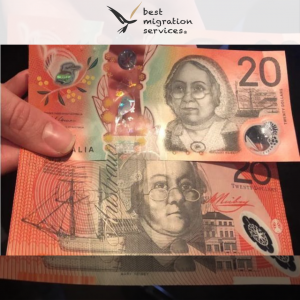
Aussies can now take a look at what will soon be in their back pockets after a Reddit user leaked the first image of the new $20 note.
The Reserve Bank of Australia first teased the new banknote in February, with its release date set for October this year, but Reddit’s teen-bean1 got a sneak peek.
The new note celebrates Mary Reibey, a convict who “broke out of rigidly defined social norms”, and earned a reputation as a successful businesswoman.
It also shows Reverend John Flynn, who pioneered the Royal Flying Doctor Service.
Reddit users seemed pretty happy with the new design, though most had to do a little research to find out who Mary Reibey was.
The RBA says the new banknote has some improved security features, like e the top-to-bottom clear window, a patch with rolling color effect and microprint features including a reversing number and a flying bird.
So far, no embarrassing typos can be seen on the note, unlike the $50 note debacle earlier this year.
Make your money work with Yahoo Finance’s daily newsletter. Sign up here and stay on top of the latest money, news and tech news.
SOURCE
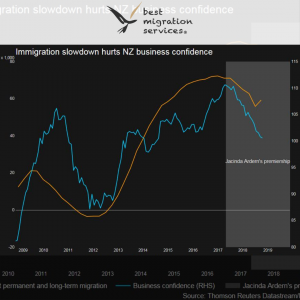
WELLINGTON (Reuters) – New Zealand pub owner Chris Dickson worries his staff is overworked. He expected employment visas for two new overseas workers to be approved weeks ago, but the paperwork was delayed with no clear reason given.
He may be left with no choice but to close down for a day, so the chefs and bartenders at his Smiths Craft Beer House in the South Island tourist hotspot of Queenstown, can get some rest.
“We are struggling to find people,” Dickson said. “It’s an epidemic.”
A plunge in net immigration is intensifying New Zealand’s labor shortage and hurting the economy to the point that the country’s central bank singled out the issue when it cut interest rates for the first time since 2016 this month.
Some businesses complain work visas are taking longer and are harder to get than previously since the election of Prime Minister Jacinda Ardern, the young leader who has been cast as something of a liberal antithesis to U.S. President Donald Trump.
Ardern came to power in 2017 promising measures predicted to reduce migration by tens of thousands a year and restrict foreign homebuyers. An overheating housing market and strained infrastructure had left many New Zealanders feeling resentful despite stellar economic growth rates.
Unemployment is at decade lows, though at 4.2% it is not unusually low by global standards.
Economists say demand for foreign labor is specific to sectors where New Zealanders don’t want the jobs – such as agriculture and hospitality – or lack certain expertise, such as construction.
Those three sectors, unfortunately, are what the nation of 5 million relies on for much of its growth.
“Migration has been an extremely dominant feature of our economic cycle and we do think it’s easing and that is contributing to the slower growth profile,” said ANZ Senior Economist Miles Workman.
The central bank this month forecasted annual net immigration of working-age people to fall to 29,000 in 2021 from 40,000 in 2018 and a mid-2017 peak of 72,400.
The moderation is partly due to tightened work visa restrictions introduced in the last months of the previous center-right National government’s tenure, but it has been persistent under the Labour-led coalition.
Ardern’s government said in December it would tighten rules for temporary worker visas to give more opportunity for New Zealanders, and recently also rolled out plans to improve vocational training.
It hasn’t tightened any broader immigration rules yet, but some businesses say the government has adopted a tougher stance in a more discrete way, with closer scrutiny on the recruitment process and slow visa processing. They also say frequent tinkering with policies such as post-study work visas, parent visas and skilled worker visas has created uncertainty.
The immigration ministry agreed there were delays, but blamed it on “operational issues”.
“I am concerned about visa delays and Immigration New Zealand is giving me regular updates about the work being done to improve processing times,” Immigration Minister Iain Lees-Galloway told Reuters in a statement.
Lees-Galloway, however, said the government did not want businesses to reach for migrant labor as the first resort.
Some foreign work visas for cafe and restaurant manager roles were declined recently due to a lack of evidence that effective training and retention strategies were being implemented by the industry to employ New Zealanders, he said.
“This doesn’t mean they can’t employ migrants, it just means they have to satisfy a labor market test before recruiting migrants,” he said.
Pub owner Dickson said businesses in Queenstown are trying to hire local staff but just can’t find enough people.
“The government needs to create a task force with local businesses to find a solution,” Dickson said.
NO CHEFS, FRUIT PICKERS
Addressing labor shortages in a pre-budget media conference on Monday, Finance Minister Grant Robertson said the government was focusing on immigration for high-need regional areas and improving the skill level of New Zealanders to meet needs.
“I don’t think we need more people coming in, but we need to make sure we are getting the right people into the right parts of New Zealand,” Robertson said. The budget will be announced on Thursday.
Migration and labor costs are weighing on business confidence, lingering at decade lows.
Fleur Caulton this year shut down one of her restaurants, Madam Woo, in the South Island city of Dunedin.
“The delay in finding chefs puts added stress and pressure on the remaining kitchen teams which is not sustainable,” Caulton told Reuters.
“We fully support the government’s objective of putting more kiwis into jobs however we struggle to find kiwis for our roles,” said Caulton.
A seasonal labor shortage was declared this month in the Bay of Plenty region, which will impact the NZ$1.2 billion ($782 million) kiwifruit export industry. Hospitals and schools have also complained of shortages.
The construction industry says it needs over 50,000 skilled workers by 2023 to meet demands.
Fletcher Building Ltd, New Zealand’s biggest construction firm, last year shut and sold loss-making units due to spiraling labor costs. Big infrastructure projects, such as the Auckland underground train system, are facing cost blow outs by more than NZ$1 billion.
“We need to get the capability on board to deliver,” said Shane Ellison, the head of Auckland Transport, which is handling the underground rail network project.
“If we don’t deliver now, we won’t be able to deliver in the coming 2-3 years,” he said.
Industries are working hard to try and attract overseas skills and know-how.
“We need top infrastructure people in New Zealand right now,” said Hamish Price, who runs an industry-led campaign called Looksee Build, particularly focused on British workers.
“We make no apologies for targeting the best of British during their period of Brexit uncertainty.
($1 = 1.5347 New Zealand dollars)



